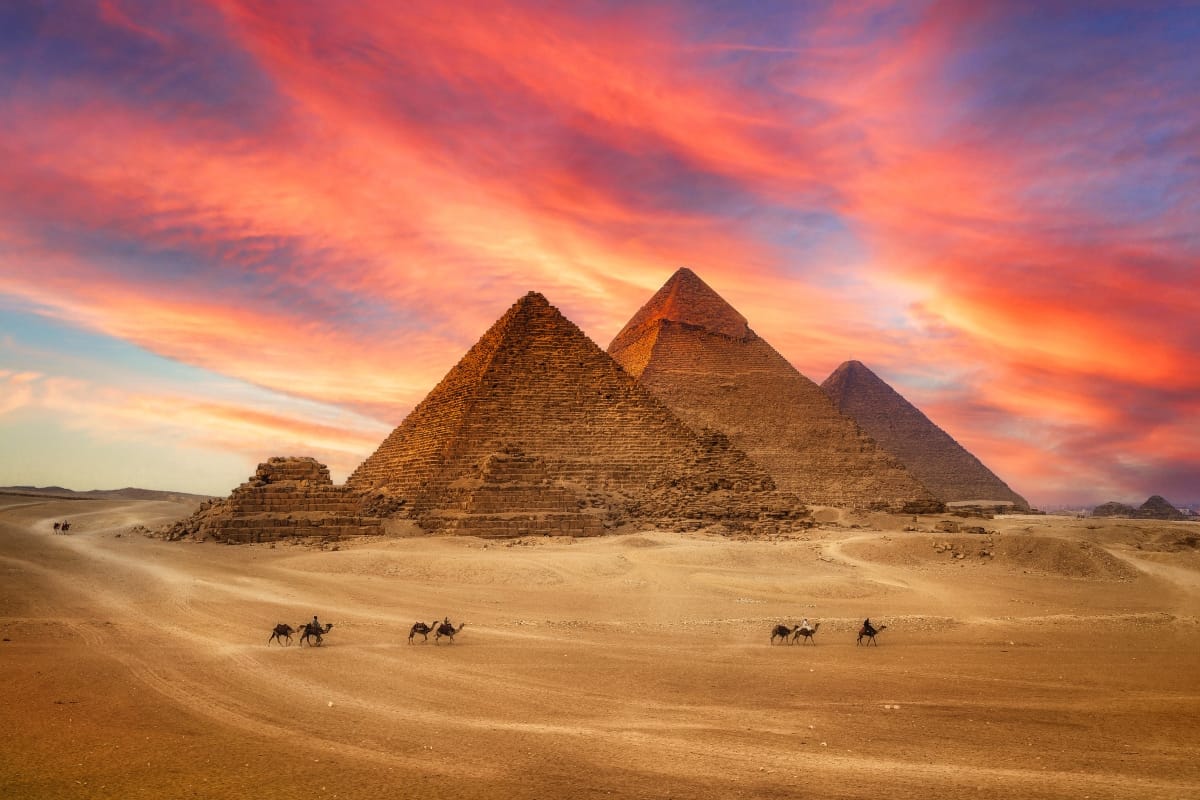The Pyramids of Giza 2.0

The Pyramids of Giza stand to be one of the world’s most admired pieces of architecture. I always ask myself, how come with all these advances of technology, no one has been able to replicate the pyramids, and design such an intricate structure?
One of the biggest hurdles that’s experienced is the amount of resources required for this type of structure. “The pyramid measures 756 by 756 feet at the base and is 481 feet tall. It is made up of more than 2 million blocks weighing on the order of 3 tons each” (Brain, 2024), this would mean that you would need to find a quarry that has that much stone and keep transporting with several trucks back and forth. In Giza Pyramids, Mark Barna discusses theories regarding the transportation and assembly of massive limestone and granite blocks, shedding light on the crazy understanding of engineering they must have had, he emphasizes how difficult it would be to try and do that in today's day and age, even with all the technology we have.
The technique of how they built it also isn’t clear, as there is lots of lost history when it comes to the pyramids. There are 2 theories about how they were built, according to Chantal Ford. In her article, “Just how the hell were the Egyptians pyramids built”, she talks about The Ramp Theory and the Water Shaft Theory. In the Ramp Theory, “the idea is that the Pyramids were built through the sheer (and impressive) force of tens of thousands of workers. Stones were supposedly pulled across the desert with ropes and sleds, and recent intel tells us that the sand was wet to reduce any friction” (Ford, 2023), she also mentions that this practice is actually pictured in ancient paintings such as in Figure 2. Once the stones had been dragged across the desert, they would be pushed up by ramps, I can imagine the work and sweat put into this! In the Water Shaft theory, they explain that “special canals were dug up from the rock quarries to the building sites, drawing water from the Nile, so that the stones could float all the way there, requiring less strength. These canals were built all around the site’s perimeter, allowing blocks to float to the side where they were needed” (Ford, 2023). I personally think that the first one is more plausible.
Lastly, I think that the cultural significance the pyramids hold is another big factor as to why no one really has the motivation to put in all the effort needed to replicate it. These pyramids were used as tombs for the Egyptian pharaohs such as in Figure 3, which had a lot to do with their belief about the afterlife and spirituality. In our modern day, the majority are prioritizing other things apart from that. So while the idea of reconstructing the pyramids remains to be a topic of discussion, it’s highly unlikely that it will happen due to cost, techniques, and our society today. The Pyramids of Giza will forever remain a marvel to all of us, and I hope to get to see them in person soon!
Sources:
Barna, M. (2018). Giza Pyramids. Discover, 39(6), 30–33.
Brain, M. (2024, March 7). What if I wanted to build a great pyramid today?. HowStuffWorks Science. https://science.howstuffworks.com/engineering/structural/build-pyramid-today.htm
Ford, C. (2023, November 22). Just how the hell were the Egyptian pyramids built?. six-two by Contiki. https://www.contiki.com/six-two/article/how-were-the-egyptian-pyramids-built/
Robinson, A. (2022, January 1). Deciphering Egypt’s Great Pyramid An ancient archive offers new insights into the construction of a man-made wonder. Science, 6576, 34.
List of Figures:
Figure 1 - Getty Images. (2024, December 15). [Photograph of the Egyptian pyramids]. In D. Hani, We might finally know how the pyramids were built. BBC Science Focus. https://www.sciencefocus.com/science/egyptian-pyramids-new-studies
Figure 2 - The Archaeologist. (n.d.). [Photograph of ancient Egyptians building the pyramids]. In A day in the life of the pyramid builders in ancient Egypt. https://www.thearchaeologist.org/blog/a-day-in-the-life-of-the-pyramid-builders-in-ancient-egypt
Figure 3 - Gallup, S. (2004, November 13). The Great Khufu pyramid looms behind the Sphinx at Giza, just outside Cairo, Egypt [Photograph]. Getty Images. https://www.gettyimages.com/detail/news-photo/tourists-marvel-at-the-sphinx-while-khufu-pyramid-looms-news-photo/51739590




